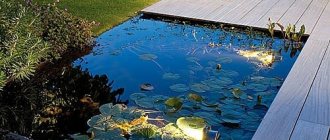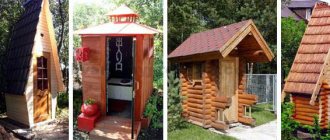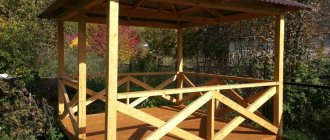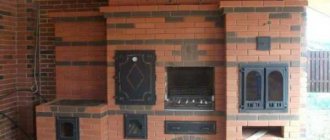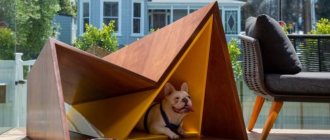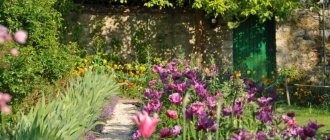We all try to create the most comfortable, warm and cozy atmosphere in our home. What could be better than year-round summer in your own greenhouse? Relaxing surrounded by lush greenery and exotic plants in the midst of winter frosts is the dream of many of our compatriots. Nowadays, you can create your own winter garden not only in a private household, but also within a dwelling in an apartment building. Of course, you will have to make efforts not only to create your own green oasis, but also to constantly devote time to the greenhouse to maintain the plants and premises in proper condition. We offer you an impressive selection of 100 design projects for a wide variety of greenhouses and hope that they can inspire you to create your own green corner for rest and relaxation.
Types of gardens
So, before you start creating a winter garden, you need to think about what you want to see in the end and for what purposes the green corner will be used.
There are several types of kindergartens, which differ both in appearance and in their functions. The most popular options for winter gardens:
A living corner of nature is a heated version of a garden that is located directly in the living area. A carefully selected climate allows both people and green spaces to feel comfortable. You can grow flowers in such a garden all year round.
A greenhouse garden is a type of winter garden used exclusively for planting various plants, including exotic ones.
The microclimate in such a garden is quite specific and a person is completely uncomfortable in it. The winter garden, in this case, performs only a decorative function.
The buffer garden is an unheated room. Such a kindergarten is usually organized on the veranda of a residential building and it serves as a passage.
Due to the constantly opening door, it is very difficult to create suitable conditions for growing vegetation, so in such gardens they do not plant many flowers and select only those that are easy to care for.
More attention to trees
Winter is the time of conifers. They remain green and become a dominant feature in the design of the garden. To prevent it from looking monochrome under the snow, pine trees, thujas, spruce trees, and junipers are planted. They add volume and greenery to the garden during the winter months. A good technique is to plant a Christmas tree, pine or spruce, which is placed alone and becomes the center of winter landscape design. Before the New Year holidays, this tree is decorated so that it is the main element of the decorative composition.
Trees with colored bark can add color to the winter garden design. In bird cherry it can be reddish, in cedar it can be green, bright red in white dogwood, or yellow in shoot tree.
The appearance of the garden in winter can be improved by using trees with different crown shapes. The denser the branching, the larger the crown, the more expressive it will look under the snow. If you have topiaries or molded trees in your garden, they will attract more attention during the winter months. Trees with weeping, drooping branches (willows, drooping birches) also look beautiful under the snow. In winter, species with dark, sharply defined, graphic branches attract more attention. It is better to place trees or shrubs with such crowns so that the pattern of the branches is clearly visible (not in dense groups).
Form
A building for a winter garden can be of absolutely any shape, from square or rectangular, to round or polygonal, depending on the area of the site, the capabilities and taste preferences of the homeowners.
Despite the huge abundance of options, usually a winter garden is rectangular in shape and is an extension to the main building. This design is universal and safe.
Traditional colonial style house
A traditional American house is a structure with many extensions, in which attic floors are used for the owners' personal quarters - bedrooms and children's rooms. In order to have more light on the attic floor, “birdhouse” dormers are sometimes placed on the roof, adding a special flavor and romance to the structure. Such houses can be found as expected in Britain and colonial America.
Colonial style house
Requirements for materials for construction
The design of the winter garden must be sustainable, practical and aesthetically attractive. To build just such a building, you need to take a responsible approach to the selection of materials for construction:
You need to select a material that is durable, resistant to rust, with improved performance and a long service life.
One of the most important qualities of a garden material is thermal conductivity. The heat should remain in the finished room for a long time.
The material must withstand the adverse effects of the environment - sun, rain, snow, high and low temperatures.
Natural lighting is one of the main parameters necessary for the harmonious growth and development of plants, therefore the material from which the garden is built must transmit at least 80% of daylight.
Load-bearing structural elements can be constructed from:
- Summer shower at a summer cottage: review of designs, materials, and schemes for self-construction
Do-it-yourself tandoor - a traditional oriental stove in a summer cottage, photos of completed projects
A polycarbonate greenhouse is a joy for a gardener, let’s understand the structures step by step (photo + video)
Aluminum slats. Aluminum is a durable material that is resistant to corrosion and temperature changes.
PVC allows you to bring to life the most daring ideas when creating a room design. This material is light, flexible, easy to process and does not require special care.
Wood is the most popular material for building a winter garden. Wood is most often chosen for the frame of a building because it is affordable and easy to install.
Natural wood must be regularly treated against fungus, insects, and protected from moisture. It is easy to build a garden with your own hands from wood.
Traditional and modern construction in North America
House in the mountains, British Columbia, Canada
Let's start our photo journey from Canada.
Modern house with glass facade, Quebec, Canada
Canada and America became the founders of highly developed technology of individual construction. It was in these countries that the construction of frame and wooden houses was put on stream in the 19th-20th centuries, and work on the construction of individual houses began to be carried out en masse. This became possible thanks to the developed technology for cutting molded timber. At first, houses were built from timber, then technological solutions were simplified.
Modern house
Modern, high-quality houses in Canada are built from logs, frames and not using “Canadian technology”. Modernism dominates construction, which determines the variety of materials used - concrete, foam concrete, and glass. The new cottages are characterized by a simple design, laconism, and huge glass walls through which panoramic views of the natural surroundings open. A common element in all projects remains the use of under-roof space.
Basic material for construction
Glass has high transmittance and load-bearing capacity. Almost 100% of sunlight will enter the winter garden.
To decorate a winter garden, you can use any type of glass: colored, impact-resistant, tempered, and so on. Among the disadvantages of the material are its fragility and high cost.
Polycarbonate is a durable and lightweight material that perfectly retains heat in a room. When choosing polycarbonate as the main material for decorating a winter garden, you can save a lot.
Climatic conditions
So, the construction of the garden room has been completed, all that remains is to connect communications to the building and plant the plants. In order for flowers and plantings to feel comfortable, it is necessary to take care of creating an ideal microclimate.
When a winter garden is located in a house, it is much easier to monitor the climate in it, and it is, therefore, as close to comfortable as possible.
If the corner of nature is located outside the living space, then in this case it is necessary to take care of normalizing the following parameters:
- Air parameters.
- Light.
- Air exchange.
- Heating.
Selecting a ventilation system
Plants need an influx of fresh air - this is the key to their normal functioning. It is necessary to provide a path for air to enter from the street into the garden, as well as for air to be removed from the garden. There are only two options here:
- Natural ventilation is provided by the presence of vents and transoms for fresh air. Exhaust air exits through special openings or valves at the top. The air flow can be adjusted by opening and closing the vents.
Minimum investment and minimum noise, but normal ventilation is ensured only if there is a temperature difference between outside and inside.
To prevent the doors from damaging the plants and not shading them, it is better to provide a sliding mechanism for opening them. Also, do not forget about mosquito nets;
32
- mechanical ventilation will work even in the absence of wind and the required temperature difference. It differs from the natural one in that the air outflow is carried out using fans.
Sometimes even more complex systems are used, where inflow and outflow are forced.
The microclimate will be fine, but your holiday in such a garden may be spoiled by the noise of working fans. In addition, these are additional costs for installation, electricity and periodic maintenance.
How to water flowers in a winter garden?
If you have a small amount of vegetation grown indoors, you can water it as usual.
If the area of the winter garden is large enough, then it is worth taking care of automating the irrigation system. It is preferable to use drip irrigation.
This system controls the degree of soil moisture and prevents waterlogging, which can destroy many plants.
Despite the complexity of the organization and many nuances, you can make a winter garden yourself.
The main thing is to carefully think through its plan, decide on the type of plants to be grown, and you can enjoy the beauty at any time of the year.
Take a look at the photo of the winter garden and you will be convinced that optimally selected climatic conditions allow you to grow even exotic, whimsical and capricious plant species in it.
Tropical, subtropical, desert and steppe plants can grow in one place and delight with their appearance. Plants perform not only a decorative function. They saturate the air with oxygen and promote its renewal.
Design and architecture of residential buildings: traditions of the times
Traditional Belgian cottages, Bridge in Bruges
Individual houses can be considered a relic of the past, and modern apartments in cities are a tribute to the times. It’s hard to argue with this, since in Asian countries with record populations the problem of territory is acute. In this regard, Russia is lucky; its inhabitants have endless expanses at their disposal.
Casa de Vetoro, mountain cottage in Spain
Using modern construction technologies, it is possible to create a place to live that will fully meet your personal preferences. The topic of modern cottages remains hotly debated among designers, architects and builders, since such a country house involves the use of all available living space.
Mountain view from the living room of a chalet in the Alps
Chalet Anzère in the Swiss Alps
Cottage with winter pool in Germany
